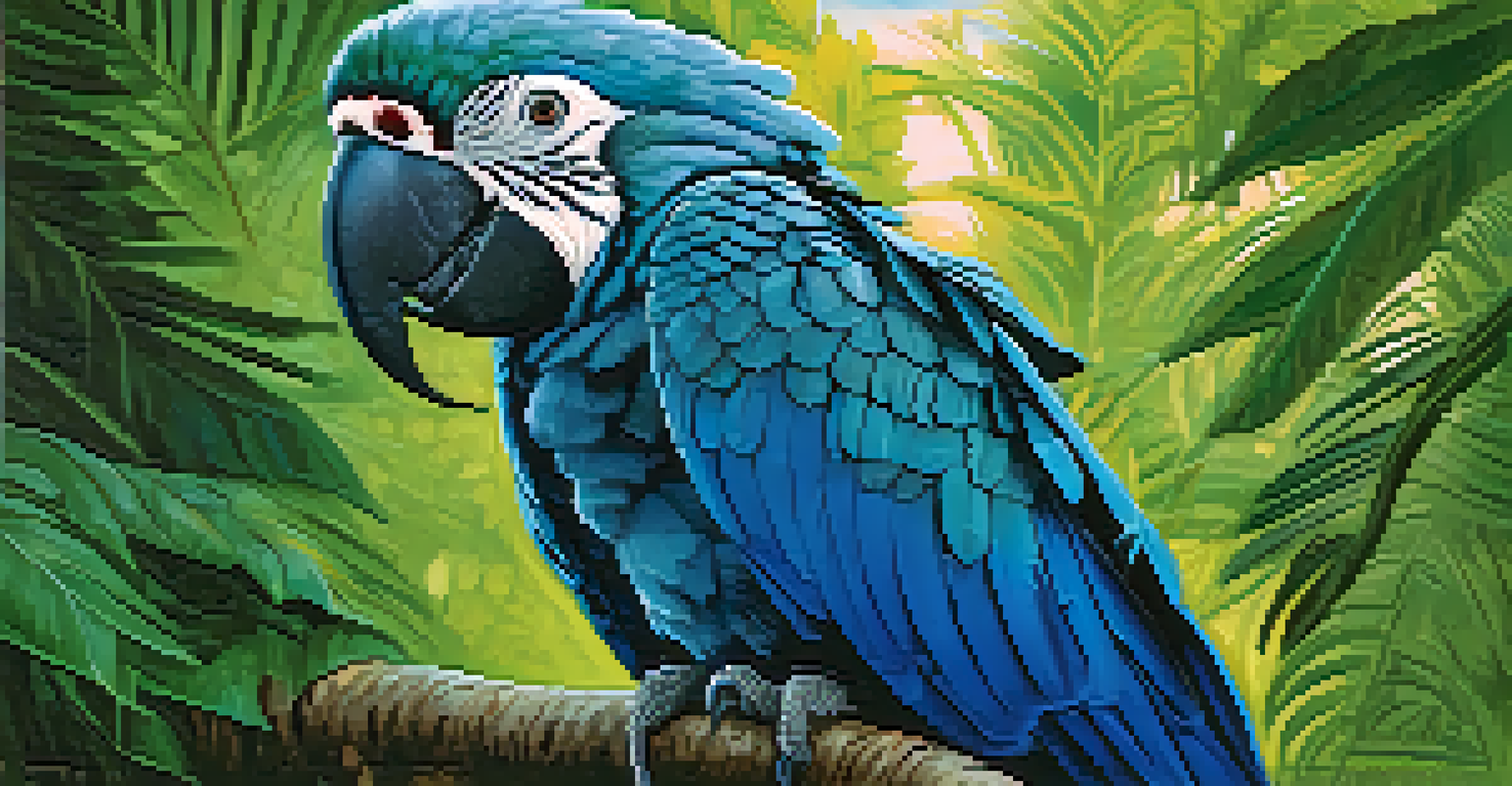The Role of Brazil's National Parks in Bird Conservation

Understanding Brazil's Bird Diversity and Its Challenges
Brazil is home to an astonishing variety of bird species, with over 1,800 different types recorded. This incredible biodiversity is largely due to its diverse ecosystems, from the Amazon rainforest to the Pantanal wetlands. However, many of these species face significant threats, including habitat loss, climate change, and illegal hunting.
The future will be green, or not at all.
The challenges facing Brazil's birds are not just local; they reflect global trends in biodiversity loss. For instance, the loss of habitats due to deforestation and urbanization has a direct impact on bird populations, leading to declines and even extinction. It's crucial to understand these challenges to appreciate the role that conservation efforts must play.
By examining the current state of Brazil’s bird populations, we can better understand the urgency behind conservation initiatives. Protecting these species is not just about preserving beauty; it's about maintaining ecological balance and the health of our planet.
The Significance of National Parks in Bird Conservation
National parks in Brazil serve as critical sanctuaries for many bird species, providing protected areas where they can thrive. These parks safeguard habitats that are essential for breeding, feeding, and migration, ensuring that birds have the resources they need. For example, the Pantanal, one of the largest tropical wetlands in the world, is home to numerous endemic species.

Moreover, national parks promote biodiversity by creating interconnected habitats that allow for gene flow between bird populations. This interconnectedness is vital for the resilience of species, especially in the face of environmental changes. The preservation of these parks directly contributes to the overall health of Brazil's ecosystems.
Brazil's Bird Diversity at Risk
Over 1,800 bird species in Brazil face significant threats from habitat loss, climate change, and illegal hunting.
In essence, national parks serve as a lifeline for bird species at risk. By maintaining these protected areas, Brazil is making a significant commitment to wildlife conservation and the future of its avian treasures.
Key National Parks and Their Bird Populations
Several national parks in Brazil are renowned for their rich birdlife, each offering unique ecosystems and species. For instance, the Tijuca National Park in Rio de Janeiro is famous for its vibrant bird species like the Red-shouldered Macaw. This park not only showcases Brazil's avian diversity but also serves as a vital research location for ornithologists.
In nature’s economy, the currency is not money, it is life.
Another notable park is the Iguaçu National Park, known for its stunning waterfalls and diverse bird populations, including the endangered Spix's Macaw. The park's efforts in conservation and habitat restoration are crucial for the survival of such rare species. By drawing attention to these parks, we can highlight their importance in the global context of bird conservation.
These national parks not only attract tourists and birdwatchers but also play a crucial role in scientific research. Understanding the specific needs and behaviors of birds in these regions is essential for effective conservation strategies.
Community Involvement in Bird Conservation Efforts
Local communities play a vital role in the success of bird conservation efforts in Brazil's national parks. By involving residents in conservation programs, parks can foster a sense of stewardship and responsibility towards their natural surroundings. This grassroots approach not only empowers communities but also enhances the effectiveness of conservation initiatives.
Educational programs aimed at local populations help raise awareness about the importance of bird conservation. When people understand how birds contribute to ecosystem health, they are more likely to participate in protective measures. For example, initiatives that promote sustainable tourism can provide economic benefits while preserving bird habitats.
National Parks as Conservation Hubs
Brazil's national parks provide essential habitats for many bird species and promote biodiversity through protected areas.
Engaging communities in conservation not only protects bird species but also enriches cultural identity. By celebrating local avifauna, communities can strengthen their connection to the environment and promote a culture of conservation.
Research and Monitoring: Ensuring Effective Conservation
Ongoing research and monitoring are essential components of successful bird conservation in national parks. Scientists conduct studies to track bird populations, migration patterns, and habitat usage, providing critical data that informs conservation strategies. This research is vital for understanding how environmental changes impact bird species.
For example, tracking migratory patterns helps identify crucial stopover sites that birds need during their journeys. By protecting these areas, conservationists can ensure that migratory birds have safe havens to rest and refuel. This proactive approach is essential for maintaining healthy bird populations.
Furthermore, collaboration between scientists, park authorities, and local communities enhances the effectiveness of conservation efforts. By sharing knowledge and resources, stakeholders can work together to address challenges and develop innovative solutions.
The Role of Ecotourism in Bird Conservation
Ecotourism has emerged as a powerful tool for promoting bird conservation in Brazil's national parks. By attracting birdwatchers and nature enthusiasts, parks can generate revenue that directly supports conservation efforts. This financial support is crucial for maintaining park infrastructure and funding research initiatives.
Moreover, ecotourism raises awareness about the importance of preserving bird habitats. Visitors who experience the beauty of Brazil's avian diversity are more likely to advocate for conservation when they return home. This ripple effect can expand the reach of conservation messages beyond national borders.
Community Involvement is Key
Engaging local communities in conservation efforts fosters stewardship and enhances the effectiveness of bird protection initiatives.
In essence, ecotourism not only benefits local economies but also fosters a culture of conservation. By creating a sustainable tourism model, Brazil can ensure that its natural treasures are protected for future generations.
Challenges Facing National Parks in Bird Conservation
Despite their crucial role, Brazil's national parks face numerous challenges that threaten their effectiveness in bird conservation. Deforestation, illegal logging, and land encroachment are significant threats that undermine the integrity of these protected areas. These activities can lead to habitat degradation, making it increasingly difficult for bird populations to survive.
Additionally, funding for park management and conservation efforts is often limited. Without adequate financial resources, it becomes challenging to implement necessary conservation programs and enforce regulations. This lack of funding can hinder research initiatives and community engagement in conservation efforts.

Addressing these challenges requires a multi-faceted approach that includes increased funding, stronger regulations, and greater community involvement. By recognizing and tackling these issues, Brazil can enhance the effectiveness of its national parks in preserving bird populations.